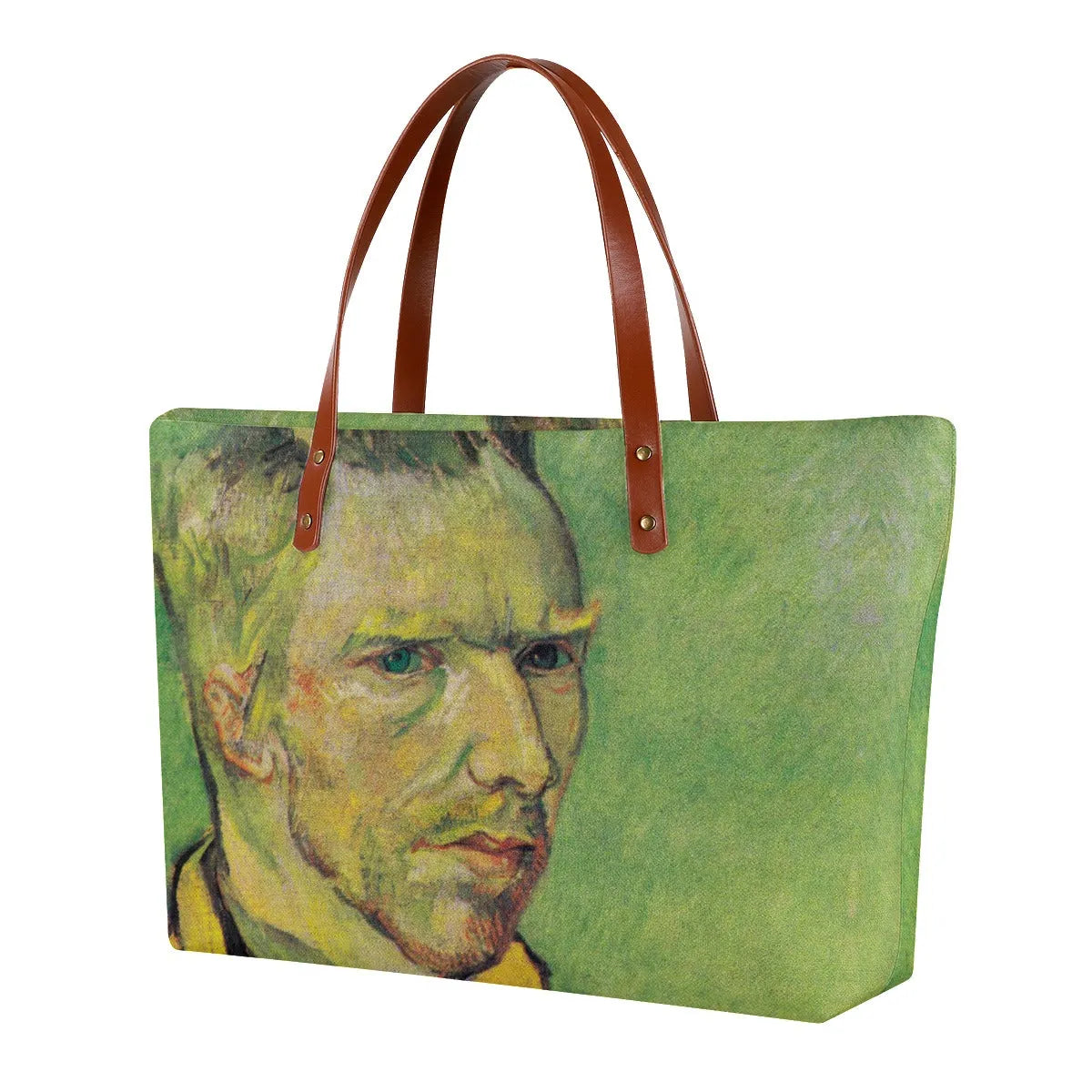



Vincent van Gogh's Self-Portrait on Green Tote Bag
Immerse yourself in the world of Vincent van Gogh with our exquisite Self-Portrait on Green Tote Bag. This masterpiece brings the iconic self-portrait to life on a functional canvas tote, allowing you to carry a piece of art wherever you go. The intricate brushstrokes and vibrant colors of the self-portrait are beautifully reproduced, capturing the essence of van Gogh's self-expression. Whether you're strolling through the city or heading to the beach, this tote bag turns every outing into an artistic statement.
Elevate your fashion game with a tote bag that goes beyond trends. Vincent van Gogh's Self-Portrait on Green Tote Bag is more than just an accessory; it's a reflection of your individuality. Stand out from the crowd and let the self-portrait's captivating gaze and expressive colors spark conversations wherever you wander. Whether you're an art enthusiast, a fashion lover, or someone who appreciates the extraordinary, this tote bag is a testament to your unique sense of style.
- Made of Diving Cloth
- Waterproof Fabric
- Large capacity
- Black zipper and Lining
- Brown strap
- Double-sided Famous Painting Art
Van Gogh's works are displayed in major museums and galleries around the world, and his name is synonymous with artistic brilliance and emotional intensity. Here are all of Van Gogh's Famous Paintings.
About the artwork
We are aiming to have your order dispatched from our facility within 48 hours. However, please bear with us in case we are spending extra time in checking / perfecting your items, particularly during the peak season around end of the year. This does not include weekends or holidays.
Purchases made after 6pm PT will not be shipped out until the next business day. If you order after 6pm PT on a friday, your order will likely be shipped out on the following monday. For more information click here.
We provide a return policy, allowing customers to return products within a specified timeframe if they are not completely satisfied. For more information click here.
We offer a range of secure payment methods, including major credit cards and debit cards such as Mastercard, Visa, and American Express. Additionally, we support digital wallets like Apple Pay and allow for seamless transactions through trusted platforms like PayPal. For more information click here.
Choose options




20% Off Everything - Limited time only.
Enjoy Free Shipping on All Orders!
